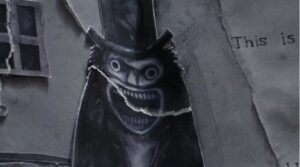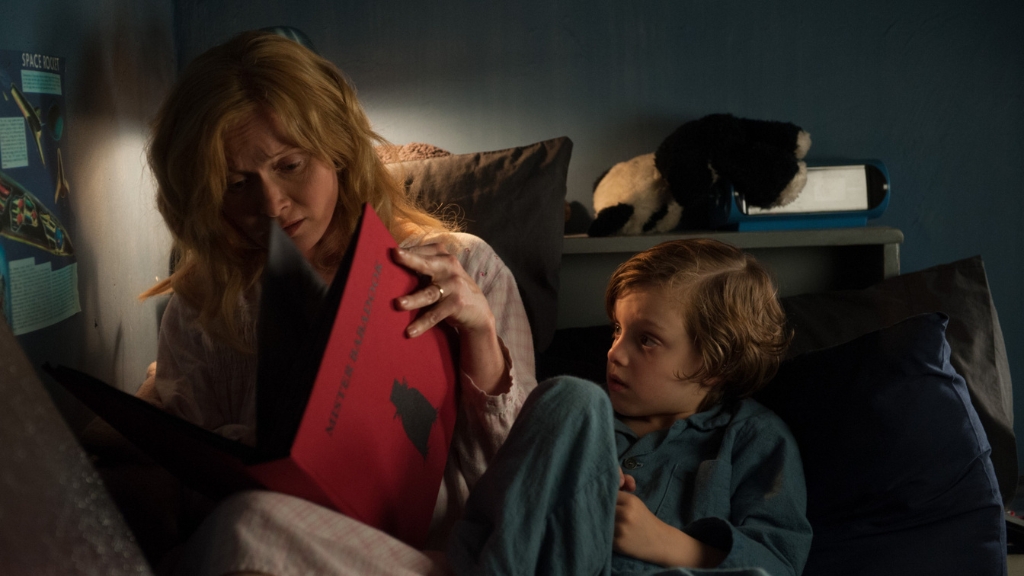"The Babadook" is a psychological horror film released in 2014. Australian filmmaker Jennifer Kent wrote and directed this story, centered around grief, loss, unresolved trauma, guilt, and depression. Jennifer also wrote and directed, ‘The Nightingale’, a 2018 historical psychological thriller.
In "The Babadook", Essie Davis delivers an unforgettable performance as Amelia, a profoundly wounded woman who can barely manage her son and her own mental health. Her portrayal is arguably one of the best in the genre's history.
The film's effectiveness lies in its exceptional cinematography, a well-crafted script, and incredibly brilliant sound design. These elements work together seamlessly to create a captivating and immersive experience for the audience.
The Story
In this heart-touching story, we witness a woman's arduous journey as she grapples with the realisation that she must not only move forward but also embrace and accept the tragic event of her past. The scars left by the tragedy will forever be a part of her, an indelible mark of her past that cannot be erased.
The Babadook delves into the complex relationship between a mother, Amelia (Essie Davis), and her troubled son, Sam (Noah Wiseman). Amelia is a single mother grappling with her unresolved trauma stemming from the car crash that claimed the life of her husband, Oskar, while she was on the way to the hospital to give birth to Sam. This traumatic event has left a profound impact on Amelia's relationship with her son, leading to a complicated dynamic of love, guilt, and repressed emotions.

Amelia juggles her service job at a retirement home with the challenges of raising Sam, who struggles with behavioral and emotional issues at school and with peers. Their daily struggles are compounded by the unreasonable demands placed on single, working-class mothers, as well as Amelia's lingering trauma from her husband's death. She evades discussions about the incident, even refusing to celebrate Sam's birthday on its actual date due to its association with Oskar's passing.
The situation worsens when Sam discovers the eerie children's book "Mister Babadook" and asks Amelia to read it to him. The book frightens Sam, leading to another sleepless night for Amelia as she tries to soothe his tears. She discards the book, but it mysteriously reappears on their doorstep. Despite burning it, the book returns, marking the arrival of the Babadook, a terrifying monster voiced by Tim Purcell. This malevolent entity haunts Amelia and Sam, appearing to Sam in haunting visions and possessing Amelia, as the book chillingly warns, "You can't get rid of the Babadook.".
Sam's behavior deteriorates due to his terror of the Babadook. He becomes increasingly agitated, yelling, and screaming. In a fit of anger, he pushes his cousin out of a multi-story treehouse. Amelia also struggles while being possessed by the Babadook. She commits heinous acts, such as killing their dog, disconnecting the phone lines, putting broken glass in the soup, and attempting to kill Sam. The book had prophesied that she would take Sam's life and then her own.
In a desperate attempt to save themselves, Sam confronts the possessed Amelia and manages to expel the monster from her. However, the monster does not perish because it is an embodiment of Amelia's own emotions and fears, which cannot be eliminated.
After expelling the Babadook, Amelia and Sam run upstairs and lock the door, trapping the monster in the basement.
The film then cuts to Sam's birthday celebration. We see Amelia, now in control of her fear, calmly descending into the basement to check on the Babadook and feed it. Though she instinctively recoils a bit when the monster emerges from the shadows, she remains in control. When asked about how "it" was that day, Amelia replies that it was quiet, indicating that tending to the monster's needs could be challenging at times but that she has come to terms with the fact that she needs to address her own emotions instead of suppressing them.
Ignoring the Babadook Makes it Stronger

Monsters and ghosts in films often symbolise real-life traumas that continue to haunt the characters. In "The Babadook," the monster represents the shared grief and trauma of Amelia and Sam over the loss of Oskar. The monster resembles Oskar, wearing a similar suit and even taking on his appearance toward the film's end, attempting to deceive Amelia into giving him Sam.
Amelia keeps her late husband's belongings, including his clothing, in the basement. Initially, she doesn't want Sam to play there, as it stirs up memories of his father. Throughout most of the film, Amelia desires for herself and Sam to move on, avoiding their grief. She alters Sam's birthday celebration every year to coincide with his cousin's, indicating that her husband's death still weighs heavily on her.
However, Amelia's attempts to ignore their grief and trauma worsen the situation. Sam persistently tells Amelia that the monster is real and that he needs to create weapons for their protection, but she either ignores him or asks him to stop telling stories. When Sam is being terrorised by the monster, Amelia seeks medical help, but sedatives don't solve the problem.
The monster seems to thrive on being ignored, growing more potent and dangerous as its existence is denied. The book suggests that if Amelia and Sam cannot gain control over the Babadook, they will both die. Although they repeatedly try to kill the monster, they eventually learn that confronting it head-on and confining it to its monster body is more effective than attempting to eliminate it.
So, after expelling the monster from Amelia for the last time, they trap it in the basement to take control of their trauma and, most importantly, their healing journey.
Coping with Emotional Trauma
Sam and Amelia must collaborate to deal with the terrifying Babadook. Although some may expect Amelia, as the mother, to solely provide a safe and joyous life for Sam, the film emphasises that she cannot defeat the Babadook alone. Sam, as a family member, plays a crucial role in finding a healthy approach to their shared trauma.
The film's ending emphasises the importance of keeping the monster in their basement, ensuring it is fed and cared for daily, rather than ignoring it. While this task is not pleasant, it is far less terrifying than facing the monster when it had free rein or when it possessed either Sam or Amelia.
Just as in real life, Sam and Amelia cannot simply disregard their trauma and hope it will vanish. Ignoring their negative emotions allows them to grow into something larger, scarier, and more sinister. The only way for Sam and Amelia to heal from their trauma is to confront it gradually and over time.
The film acknowledges that healing from severe traumas in real life is not an overnight process but requires significant mental and emotional processing. It warns of the dangers of attempting to avoid or suppress traumas, as this approach can result in losing control over them and allowing them to control us.
Is the Babadook in Amelia's imagination or real?

Some viewers take the metaphorical interpretation of "The Babadook" a step further, suggesting that the titular monster may not be real at all. They believe that the protagonist, Amelia's depression and trauma, drove her to a psychotic break, causing her to hallucinate the Babadook and be solely responsible for the film's terrifying events.
While there is some evidence to support this theory, such as the fact that Amelia used to write children's books where the character of the Babadook originated, no one else besides Amelia and her son, Sam, witnesses the creature. Additionally, most of the supernatural elements, like visions and the self-repairing book, can be explained by Amelia's mental state.
However, this theory has a few flaws. If the Babadook isn't real, it implies that Amelia's mental health issues will continue to go untreated, which could potentially be dangerous. Furthermore, viewing the Babadook as a figment of Amelia's imagination limits its universality.
According to director Jennifer Kent, "The Babadook" is about connecting with Amelia and her journey of confronting her inner demons. For Amelia to heal, she must stop internalising and suppressing her emotions. If the Babadook is merely a delusion, it undermines the film's message of externalising trauma.
Recognising the Babadook as a real entity within the film's universe enhances its metaphorical significance and provides a powerful exploration of trauma and catharsis.

The conclusion of The Babadook presents a glimmer of hope for Sam and Amelia as they navigate the aftermath of their trauma. Sam's relationships with other kids improve, and Amelia establishes a connection with her sister and fosters a potential romance with her co-worker. However, their healing journey continues, as the lingering presence of the Babadook in their basement serves as a reminder of their ordeal.
It remains uncertain whether the Babadook will ever fully depart from their lives, requiring them to provide ongoing care and attention. This concept aligns with the reality that certain traumas, while manageable, may never be entirely forgotten. Amelia and Sam must carry the burden of Oskar's death, a loss that cannot be reversed, even through remarriage.
While the Babadook may never completely disappear, it is reasonable to expect that its daily influence and the associated fear may gradually diminish. Just as in real life, past traumas cannot always be erased from our minds, but we can learn to manage them effectively, preventing them from consuming us entirely. Over time, the Babadook may require less attention, allowing Sam and Amelia to gain control over their lives and move forward.

